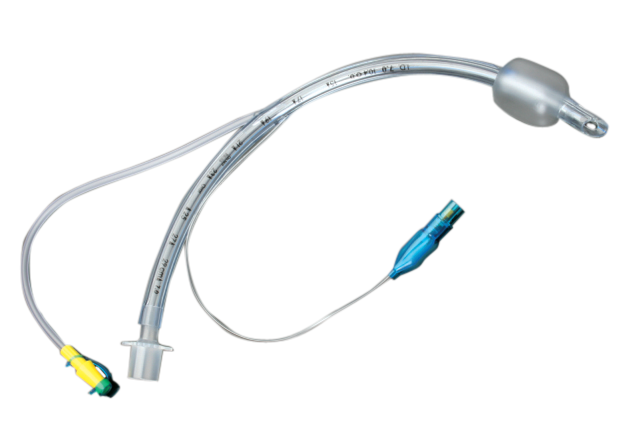
Endobronchial Tube with Aspiration Tube
Endobronchial tubes are devices that are inserted through the nose or mouth and down the throat in order to allow a healthcare provider to suction out mucus and other fluids from the lungs. They are used when a patient is unable to expectorate, or cough up, these secretions on their own.
| Ref. No.: | I.D. |
|---|---|
| NMR100162 | 6.0 |
| NMR100167 | 6.5 |
| NMR100172 | 7.0 |
| NMR100177 | 7.5 |
| NMR100182 | 8.0 |
| NMR100187 | 8.5 |
| NMR100192 | 9.0 |
Endobronchial tubes are devices that are inserted through the nose or mouth and down the throat in order to allow a healthcare provider to suction out mucus and other fluids from the lungs. They are used when a patient is unable to expectorate, or cough up, these secretions on their own.
An endobronchial tube with aspiration tube is a medical device that is inserted into the lungs to help clear secretions and mucus. It is often used in patients who have difficulty clearing their lungs on their own, such as those with COPD or other chronic respiratory conditions. The endobronchial tube goes through the nose or mouth and down the throat, while the aspiration tube is connected to a suction device. The suction device helps to remove mucus and secretions from the lungs.
An endobronchial tube with aspiration tube is used to suction mucus and other secretions from the lungs. It is inserted through the nose or mouth and down the throat into the bronchi (air passages). The suction catheter is then passed through the endobronchial tube and into the lungs. The secretions are then suctioned out of the lungs and into a container.
An endobronchial tube with aspiration tube can be a great way to help clear mucus and secretions from your lungs. This type of device is commonly used in people with COPD, bronchiectasis, and other chronic respiratory conditions. The endobronchial tube is inserted through the nose or mouth and goes down the throat into the trachea (windpipe). The aspiration tube is then used to suction out mucus and secretions.
There are several benefits of using an endobronchial tube with aspiration tube. First, it can help to improve your breathing. Second, it can help to clear your airway so that you can cough up less mucus. Third, it can help to prevent pneumonia by removing bacteria and other particles from your lungs. Finally, it can help to reduce the risk of re-infection by clearing out mucus and secretions that could contain bacteria or viruses.
There are very few risks associated with using an Endobronchial Tube with Aspiration Tube. The main risks are related to the anesthesia required for the procedure. There is a small risk of pneumothorax (collapsed lung), and there is also a very small risk of esophageal perforation. Overall, the risks are very low and the procedure is considered to be quite safe.
If you or a loved one has been diagnosed with a lung condition that requires the use of an endobronchial tube with aspiration tube, it is important to know how to properly care for the device. Here are some tips on how to keep your endobronchial tube clean and functioning properly:
1. Rinse the endobronchial tube with warm water after each use. This will help to remove any mucus or other debris that may be clinging to the device.
2. Use a soft, clean cloth to gently dry the endobronchial tube after rinsing. Avoid using harsh chemicals or scrubbing the device, as this can damage it.
3. Inspect the endobronchial tube regularly for any signs of wear or damage. If you notice any cracks, tears, or other damage, contact your healthcare provider for replacement parts.
4. Store the endobronchial tube in a cool, dry place when not in use. Avoid exposing the device to extreme temperatures or moisture, as this can damage it.
By following these simple tips, you can help ensure that your endobronchial tube with aspiration tube lasts as